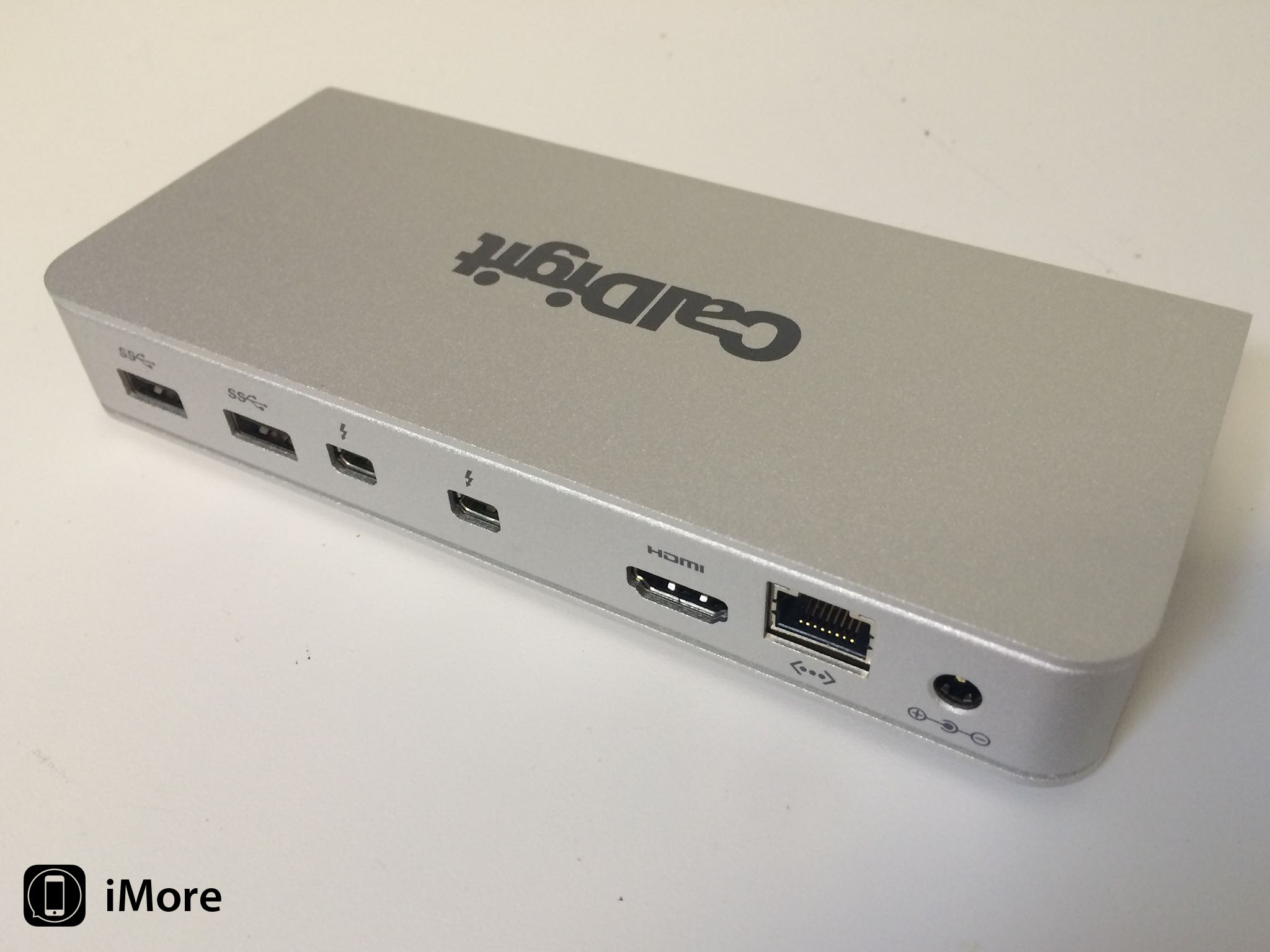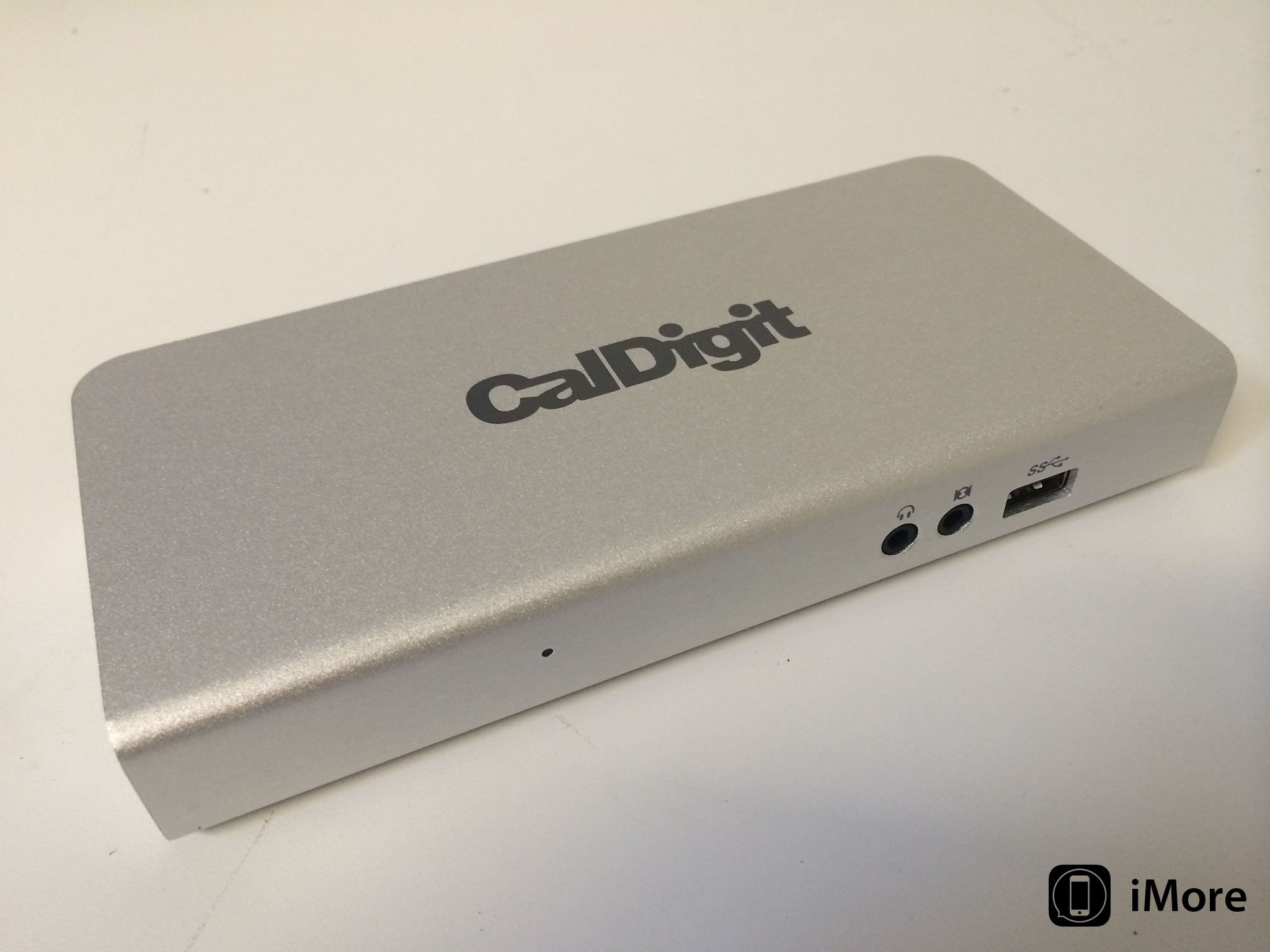CalDigit's Thunderbolt Station is one of a new class of peripherals designed for Thunderbolt-equipped Macs. It uses the prodigious bandwidth of the Thunderbolt connection on new Macs to connect a variety of peripherals over USB, Thunderbolt, Ethernet and more. Does it work well, and is it worth the money? Let's have a look!
The Retina MacBook Pro and MacBook Air are great machines, but one area Apple skimped on - because of size constraints - is the number of available ports. Compared to an iMac or Mac mini, or even the venerable non-Retina MacBook Pro, newer laptops come up short - no Ethernet port, for example. Fewer USB 3.0 ports. And so on. Fortunately, if you need port expansion, there's an answer: CalDigit's Thunderbolt Station. It's a $199 peripheral that increases the expandability of your Mac dramatically.
The Thunderbolt Station comes in a powdered aluminum finish, to match the exterior of your Mac. While no one would mistake it for an Apple design (if, for no other reason, the prominent CalDigit logo on its top), its color is close enough to the MacBook's case and the beveled rear corners echo the beveled corners of the MacBook too.
On the Thunderbolt Station's front are a 3.5 mm headphone jack and a 3.5 mm microphone jack, along side a single USB 3 port. There's also a blue LED which illuminates when the unit is plugged in (it requires an external power supply, included).

On the back are two more USB 3.0 ports, two Thunderbolt ports (one to daisy chain to other peripherals like a monitor, RAID system, etc.; the other to connect to your Mac), an HDMI port, and a Gigabit Ethernet port.
Using the Thunderbolt Station is dead easy - just connect it to your Mac using a Thunderbolt cable (which you'll either need to supply on your own or order as part of a specially priced bundle on CalDigit's web site). Then attach the peripherals you plan to use with it. No drivers are necessary. If you connect it to an Ethernet network, you'll need to add the new network interface in OS X's Network system preference before it'll work.
This keeps all the other ports on your Mac free, which is great if you have a lot of stuff you need to use. But what's potentially more important is that the Thunderbolt Station gathers up a lot of cable clutter that would otherwise burst from both sides of your laptop. A single Thunderbolt cable connects the Thunderbolt Station to the Mac, so you can leave your peripherals connected to the Thunderbolt Station, then pick up your laptop and go without leaving a mess of electronic spaghetti behind.
In my testing, devices worked without incident connected to the Thunderbolt Station and my early 2013-era Retina MacBook Pro. USB 3.0 performance was comparable to a direct connection to the Mac; Gigabit Ethernet ran as fast as it does through a Thunderbolt adapter connected directly to the laptop, and my DVI display worked just fine using a Thunderbolt adapter as well. In short, using CalDigit's Thunderbolt Station was entirely transparent, which, quite frankly, is the way I like it.
The Thunderbolt Station measures just short of seven inches wide, standing about an inch high and 3 inches deep. It weighs just short of a pound. That's heftier than I'd really want for something to throw in my laptop bag and bring with me, but I don't see that as a big problem: it's designed to work as a desk peripheral rather than a mobile device. The Thunderbolt Station is very unobtrusive on a desk, thanks to four rubberized feet that keep it securely in place even when you're plugging and unplugging devices.
I've made a lot of the Thunderbolt Station's suitability for use with a Mac laptop, but the fact is it'll work with any Thunderbolt (or Thunderbolt 2) equipped Mac. But I suspect the device's best use case is with laptops, where space and expansion are typically at a premium.
I'm familiar with two other Thunderbolt expansion devices - Belkin's $299 Thunderbolt Express Dock and Matrox's $249 DS1. Belkin's device includes FireWire 800, but lacks HDMI (all the ports are rear facing, however, which is an aesthetic I prefer to the forward-mounted headphone, mic and USB port on the CalDigit). Matrox's, which costs $50 more, incorporates HDMI (a DVI version is also available), but sports two slower USB 2.0 ports with only one USB 3.0 port available.
From my perspective, the CalDigit Thunderbolt Station is a better value than either Belkin's or Matrox's, though the absence of FireWire 800 means yet another Thunderbolt dongle to hang off your daisy chain, if you're still using a FW800 hard drive or RAID, as I do.
The good
- Plenty of expansion to connect all your devices
- Gathers (most) cables together and behind to reduce desktop clutter
- Design mimics Apple's own design language
The bad
- Front-facing ports get in the way
- No FireWire 800 port for connecting legacy storage devices
Bottom line
The front facing ports can be a bit awkward, and I wish there was FireWire 800, but those are minor quibbles. CalDigit's Thunderbolt Station is priced below the competition with better features, and is a great value that keeps desk clutter to a minimum.
- $199 - Buy now


